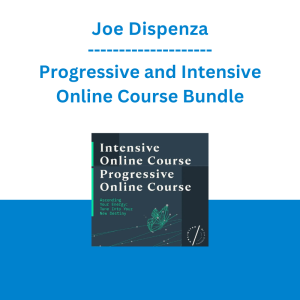*** Proof of Product ***
Exploring the Essential Features of “James Pfrehm – Learning German: A Journey through Language and Culture”
Learning German: A Journey through Language and Culture
Explore German cultures as you master all the skills needed to understand and speak basic German.
LESSON (30)
01:Willkommen!
Guten Tag! Your first lesson in German introduces you to useful expressions and some of the distinctive sounds of the language. Professor Pfrehm shows how to turn u into ü (u with an umlaut) and how to transform ch, spoken in the front part of the mouth (as in ich, meaning “I”), into German’s back-of-the-throat ch (as in the composer Bach). And, you’ll discover why German is worth learning.
02:Definite Articles, Gender, and Nouns
Meet German’s three definite articles—der, die, and das—which correspond to masculine, feminine, and neuter grammatical genders. Get tips on how to predict the gender of nouns. Learn the names of the letters of the alphabet and their pronunciations. Survey the countries where German is an official language. And add to your growing vocabulary—from der Arm (arm) to die Zeit (time).
03:Personal Pronouns and the Verb sein
Warm up with Zungenbrecher (literally, “tongue-breakers”). These are phrases that add fun to learning German pronunciation. Then study the singular and plural forms of the personal pronouns. Practice conjugating the most important verb in the German language, sein (to be). Finally, discover how to make singular nouns plural, looking for patterns that will aid memorization.
04:Regular Verbs in the Present Tense
Begin with the greeting, Wie geht’s? (more formally, Wie geht es Ihnen?) Rehearse responses, such as, Es geht mir gut and Es geht mir Ausgezeichnet. Practice conjugating present-tense regular verbs, and discover the wonderful utility of the indefinite pronoun man. Finally, learn the German names and nationalities for European countries. Along the way, encounter a new sound: the a-umlaut, ä.
05:Indefinite Articles and Numbers to 100
Indulge your appetite for German by learning the protocol for ordering drinks in a pub and treats in a bakery. Dip into the relevant vocabulary, focusing on the indefinite articles and the numbers from 0 to 100, which are pleasingly like numbers in English. Get a taste of German’s famous system of word endings, known as inflections, which are packed with useful grammatical information.
06:Eine Reise nach Wien und Salzburg
Travel to two cities in Austria, Vienna (called Wien) and Salzburg, to practice your fundamental skills in German. Learn useful expressions for giving directions. Then investigate the beautifully simple word gern, which expresses approval or enjoyment. Find out how to negate a statement with a well-placed nicht. And along the way, you’ll drool over Vienna’s multitude of delicious coffee libations!
07:Asking Questions and Numbers above 100
Start with another satisfying Zungenbrecher. Then get acquainted with the different ways of asking questions—both open-ended and close-ended questions. Survey the interrogative pronouns, focusing on the special uses of wo, wohin, and woher, which all mean “where,” but with distinct implications regarding motion and place. Finally, learn to count to a billion! (Without saying every single number on the way.)
08:The Nominative and Accusative Cases and kein-
Plunge into German’s grammatical case system, covering the nominative and accusative cases, which correspond to the subject and direct object. View a declension table of nominative and accusative endings for articles, and practice them in a tour of a typical house, learning household words. And discover how to negate a noun phrase with kein, and the supreme utility of the expression, es gibt.
09:Time in German and Possessive Pronouns
Wie viel Uhr ist es? (What time is it?) Learn to tell time and how to read a railway timetable. Rehearse using the prepositions um, von, and bis in a temporal context. Also discover that German has three distinct words that cover our English term, “time.” Then dive into possessive pronouns—in singular and plural, as well as nominative and accusative—picking up new vocabulary along the way.
10:Coordinating Conjunctions and der- Words
Coordinating conjunctions—such as aber, denn, oder, sondern, and und—allow you to link two dependent clauses in expressive ways. Get the hang of these simple words that let you say complex things. Then unlock the secret of German syntax with the Word Position Model. Finally, study a handy class of noun modifiers, called der-words, that have endings patterned after the definite article.
11:Modal Verbs and More Accusative
Use the public service messages on German Bierdeckeln (beer coasters) to launch into modal verbs—a two-part verb construction that expresses desire, necessity, or possibility, as in Ich möchte Deutsch lernen (I would like to learn German). Review the months, seasons, and days of the week. Also, see how the accusative case is used with certain expressions of time and after specific prepositions.
12:Eine Reise nach München und Rothenburg ob der Tauber
Prost! Open with toasting customs at Oktoberfest in München (Munich). Your visit to this vibrant city and to charming Rothenburg ob der Tauber introduce you to stem-vowel changing irregular verbs—those that undergo a simple vowel change in the present tense, second-person familiar, and third-person forms. These verbs are generally so common that the irregular forms are quickly memorized.
13:Present Perfect and da- and wo- Compounds
Learn to form compounds with da- and wo- plus a preposition, as in dahin (to there) and wohin (to where?). Then leave the present tense to meet your first past-tense form, confusingly called the present perfect. Concentrating on verbs classified as weak, discover that their present perfect forms are satisfyingly regular. Finally, practice getting these syntactic elements in the right order.
14:Ich hab’ mein Herz in Heidelberg verloren
Via a love story, encounter irregular strong verbs in the present perfect tense. Along the way, find out where the terms weak and strong come from (hint: the same scholar who compiled a famous collection of German fairy tales). Then explore vowel changes, known as ablaut, which characterize strong verbs. Cover all seven ablaut classes. Also, learn about model verbs and mixed-class verbs.
15:Separable-Prefix Verbs
Open with a tutorial on the refuse recycling system in Germany, leading to final pointers on the present perfect, which for native speakers is the most widely used tense for expressing past events in everyday speech. Then tackle another widely used grammatical feature, separable-prefix verbs, seeing how they fit into the Word Position Model introduced in Lesson 10. Finally, go clothes shopping!
16:Subordinate and Infinitive Clauses
Meet two German superstars—singers Herbert Grönemeyer and Annemarie Eilfeld—in a dialogue that covers subordinate and infinitive clauses. Together with indirect questions, which are formed just like subordinate clauses, these constructions take your German fluency to a new level. Then, use the Word Position Model, plus fresh insights into word order, to build a classic long sentence in German.
17:More Infinitive Clauses and the Dative Case
Sankt Nikolaus (Father Christmas) sings a holiday song and introduces the useful dependent clause, um…zu + infinitive. Also learn how to deal with the dative—the case used for indirect objects and that answers the question, “to whom or for whom?” Practice fitting this form between the subject and direct object, and see how it relates to the case forms you’ve already learned.
18:Eine Reise nach Zürich und Zermatt
Visit two attractions in German-speaking Switzerland: the charming city Zürich and the Alpine resort Zermatt. Featuring a chocolate factory and other delights, the dialogue brings up the dative forms of possessive pronouns, which follow the pattern of ein-words. Next, learn the dative endings for der-words. Finally, discover an interesting exception to word order rules presented earlier.
19:Reflexive Verbs and Pronouns
Learn parts of the human body from two unusual experts: male and female Schaufensterpuppen (mannequins). Then, visit a German doctor in a dialogue that introduces reflexive verbs and pronouns. These verbs involve actions that refer back to the subject of the clause, such as sich fühlen (to feel; or literally, to feel oneself). The examples you cover take pronouns in the accusative case.
20:More Dative and Subordinating Conjunctions
Continue your study of reflexive verbs and pronouns by looking at constructions that require the pronoun in the dative case. One example is the very useful sentence Das ist mir egal (I don’t care). Then step back and consider the four major uses of the dative. Also learn how “The Blue Danube” waltz by Johann Strauss II is the key to learning some of the most common prepositions with dative objects.
21:The Simple Past
Delve into the checkered past of Professor Pfrehm as you learn about … the past—the simple past, that is. This tense is different in form from the present perfect you learned in Lessons 13–15, but its meaning is the same, though it is mostly used in formal writing. Cover the simple past forms of the verbs sein, haben, and geben, and the modal verbs müssen, können, mögen, dürfen, wollen, and sollen.
22:Bäuerin Bärbel und die rotbärtigen Zwerge
Enter the world of fantasy with a Märchen (fairy tale) designed especially for this course to present verbs in the simple past tense. Featuring a widow in distress, strange little men with red beards, and a gruesome plot twist, the story is so thrilling that the seven classes of simple past endings for strong verbs, plus the much less complicated paradigms for weak verbs, will go down like candy.
23:More Simple Past and Relative Pronouns
Reach the exciting conclusion of the fairy tale from the previous lesson, while finishing your exploration of the simple past. Then turn to vocabulary for professions and the workplace, using it to construct sentences that present a new grammatical element: relative pronouns. Learn 12 of the 16 relative pronouns, which happen to be identical to the definite articles (with one exception).
24:Eine Reise nach Hamburg und Cuxhaven
Travel to two more intriguing destinations in the German-speaking world: the bustling German port of Hamburg and the quaint seaside town of Cuxhaven. Hear about die Wattwanderung, a remarkable walk across an extensive mudflat near Cuxhaven. Meanwhile, learn to form the imperative mood, which is used to issue commands, and practice constructing relative clauses with prepositions.
25:Two-Way Prepositions and Verbs That Use Theme
So far, you have studied prepositions that always take the dative case (bei, mit, von, etc.) or the accusative (durch, bis, für, etc.). Now, look at those that can take either case, depending on the context. These “two-way” prepositions include an, auf, and in. Study the verbs that often accompany them, expressing either location (and, therefore, dative) or placement/destination (hence accusative).
26:Comparative/Superlative and Adjective Endings
Professor Pfrehm introduces his three favorite German-language movies—a war film, a spy drama, and a sci-fi thriller—giving tips on the best way to watch them to improve your German comprehension, all while being entertained! His goal is not film criticism, but rather teaching you how to construct comparative and superlative sentences. After that, he tackles the three sets of adjectival endings.
27:The Genitive Case and the Passive Voice
Practice your first joke in German. Then meet the fourth and final German case—the genitive—completing your study of the case system. See how von + a dative construction performs the same function as the genitive. Then turn to prepositions that take the genitive, such as wegen, trotz, and laut. Finally, plunge into the passive voice, learning how to turn the object of a sentence into the subject.
28:The Subjunctive Mood
So far, you have been using mostly the indicative mood—the verbal form used to express reality and facts—with a brief foray into the imperative mood used to express commands (in Lesson 24). Now, learn the mood for expressing contrary-to-fact or hypothetical situations: the subjunctive. The dialogue centers around the frustrations and second thoughts attending the purchase of a new smartphone.
29:Eine Reise nach Wittenberg und Berlin
Dig deeper into the subjunctive by learning to express hypotheticals in the past tense. The dialogue takes you through eastern Germany via the famous Autobahn: first to Wittenberg, site of Martin Luther’s historic challenge to the Catholic Church, and then on to Berlin, where you survey some of the many monuments and museums, including sites commemorating the Berlin Wall and the Holocaust.
30:Our Journey: The End or Just the Beginning?
Finish with a series of unaided dialogues of increasing difficulty, covering grammar you have studied in the course. You’ll be surprised at how much you understand! Looking ahead, Professor Pfrehm offers tips and strategies for improving your German, from getting a German-speaking, video-chat pal to subscribing to German language podcasts. And so, viel Glück, auf Wiedersehen, und bis gleich!
DETAILS
Overview
This series teaches all the skills needed to understand and speak basic German. Focusing on major attractions in Germany, Austria, and Switzerland, these episodes are perfect preparation for anyone who wants to experience German-speaking culture firsthand, from conversing with locals to reading signs and menus to navigating the railways and Autobahn.
About
James Pfrehm
“Whether its literature, business, science, philosophy, music or history; German-speaking culture has literally helped shaped the world we live in today.”
ALMA MATER University of Wisconsin, Madison
INSTITUTION Ithaca College
James Pfrehm is an Associate Professor of German and Linguistics at Ithaca College. He received a master’s degree in German Literature from the University of Washington and a doctorate in Germanic Linguistics from the University of Wisconsin–Madison.
Dr. Pfrehm’s teaching and research are intentionally interdisciplinary and include the German language; the literature and culture of German-speaking countries; and several subfields of linguistics, primarily sociolinguistics, dialectology, linguistic anthropology, and technolingualism. He has taught at universities in Heidelberg and Münster, has written and presented his research at numerous academic conferences, and has led several workshops at universities across the United States on teaching foreign languages with technology.
Dr. Pfrehm has received recognition from the Student Governance Council at Ithaca College for his outstanding teaching and commitment to his students, and he has earned various institutional grants to take students abroad for short-term study experiences.
Dr. Pfrehm is the author of Technolingualism: The Mind and the Machine and Austrian Standard German: Biography of a National Variety of German. He is also the author or coauthor of two foreign language textbooks: Kunterbunt und kurz geschrieben: An Interactive German Reader and Textures: Pour approfondir la communication orale et écrite.
Dr. Pfrehm is also a published playwright and has had multiple plays produced by theaters in the United States and Canada.
Please see the full list of alternative group-buy courses available here: https://lunacourse.com/shop/










 Hemi-Sync - Gateway Experience® Wave I – Discovery
Hemi-Sync - Gateway Experience® Wave I – Discovery  Emanuele Bonanni - My Trading Way
Emanuele Bonanni - My Trading Way  Dave Landry - Stock Selection Course
Dave Landry - Stock Selection Course  Simpler Trading - Bruce Marshall - The Options Defense Course
Simpler Trading - Bruce Marshall - The Options Defense Course  Gary Halbert - How To Write Sales Letter That Will Make You Rich
Gary Halbert - How To Write Sales Letter That Will Make You Rich  The Daily Traders – Exclusive Trading Mentorship Group
The Daily Traders – Exclusive Trading Mentorship Group  Lesa Snider - Adobe Photoshop Deep Dive: Creative Cloud
Lesa Snider - Adobe Photoshop Deep Dive: Creative Cloud  Phil Chester - DayDreamer Pack
Phil Chester - DayDreamer Pack  Joe Dispenza - Progressive and Intensive Online Course Bundle
Joe Dispenza - Progressive and Intensive Online Course Bundle  Atlas API Training - API 570 Exam Prep Training Course
Atlas API Training - API 570 Exam Prep Training Course  Greg Loehr - Advanced Option Trading With Broken Wing Butterflies
Greg Loehr - Advanced Option Trading With Broken Wing Butterflies  Sovereign Man Confidential - Renunciation Video
Sovereign Man Confidential - Renunciation Video  CHRISTINE HASSLER - Unleashed - Coach Your Clients To Live An Unstoppable Life
CHRISTINE HASSLER - Unleashed - Coach Your Clients To Live An Unstoppable Life  French Trader – Nasdaq Trading Strategies
French Trader – Nasdaq Trading Strategies  Edwin Barnhart - Lost Worlds of South America
Edwin Barnhart - Lost Worlds of South America  Better Orgasm Through Better Communication - Welcomed Consensus
Better Orgasm Through Better Communication - Welcomed Consensus  Thomas LeBlanc - Administering Business Intelligence - Pragmatic Works
Thomas LeBlanc - Administering Business Intelligence - Pragmatic Works  Andrew Harvey - Embrace the Dark Night to Become the Phoenix Rising - The Shift Network
Andrew Harvey - Embrace the Dark Night to Become the Phoenix Rising - The Shift Network  Oliver Velez - Essential Strategy Of Trade For Life
Oliver Velez - Essential Strategy Of Trade For Life  Spirituality Zone - Cardiovascular System (Advanced Version)
Spirituality Zone - Cardiovascular System (Advanced Version)